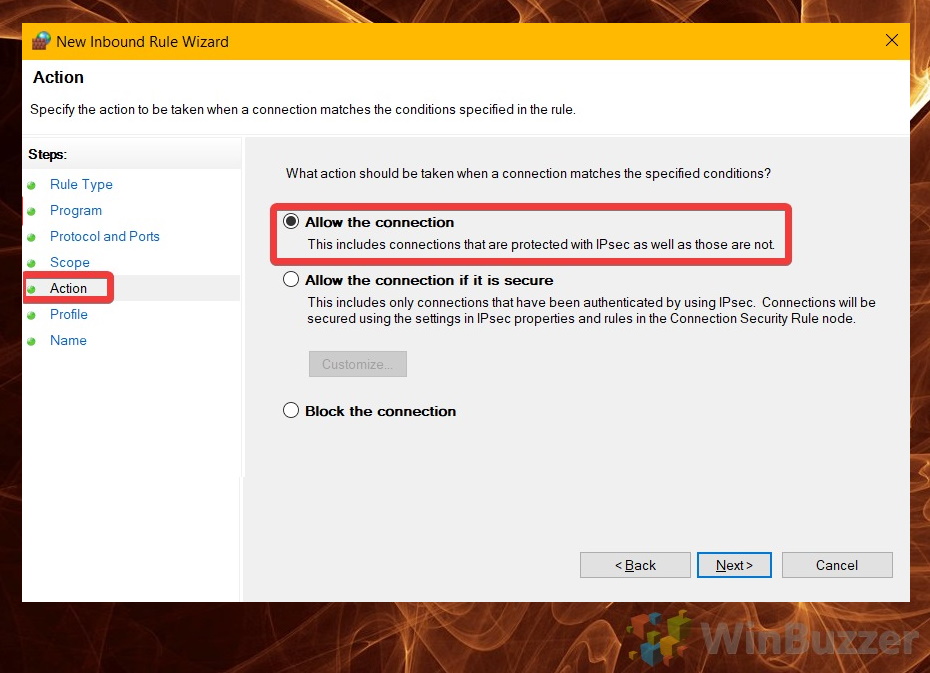The Windows 10 Firewall is an important part of your system’s security, but it can also be a nuisance. At times, for example, it can cause connection issues with certain services. In such cases it may be necessary to add a Windows Firewall rule to open the relevant port.
Common Windows 10 ports that users want to open include port 80,8088, 4000, 443, and 88. It pays to be aware of the security risks involved with opening a particular port. Consider that there may be a reason it’s closed, and you may only want to do so temporarily.
After you’ve researched any risks, you can follow our guide below to learn how to open a port in Windows and how to close a port to maintain security.
How to Open or Block a Port or Port Range in Windows 10 Firewall
The Windows Firewall looks at incoming and outgoing connections and analyses them to determine whether they’re trustworthy. At times, however, it may block a useful port unless the user explicitly tells it not to.
To add a port to Windows Firewall (or close a port), you need to add something called a Windows Firewall rule or Firewall exception. This requires use of the dedicated Firewall app.
- Open the Windows Firewall app in Windows 10
Press the Start button and type “Windows Defender Firewall”. Click the top result to open it.
- Open advanced iFrewall settings
In the left side-bar of the Firewall, click the “Advanced settings” header and press “Yes” to any admin prompts.
- Click ‘Inbound Rules’ in the sidebar

- Press ‘New Rule…’ in the right sidebar
Adding this Windows Firewall Rule will let us control the traffic it does and doesn’t let through.
- Select the ‘Port’ rule type and press ‘Next’

- Choose your protocol
There are two choices wehen it comes to Windows 10 ports – TCP and UDP. We won’t dive into the differences between the two, as the software you’re using probably has a list of the exact ports you need to open and which protocols. Press “Next”.
- Enter the Windows 10 ports you want to open or close
Now that you’ve selected your protocol, turn your eye to the “Does this rule apply to all local ports or specific local ports” heading. Check “Specific local ports” and enter the Windows 10 ports you want to open or block.
You can seperate different ports by a comma, or add a “-” between two numbers to add a range of ports to your Windows firewall rule. Press “Next”.
- How to open or close a port in Windows 10 Firewall
Now we get to the exiciting part. On the “Action” screen, we can choose what we want the the Windows Firewall rule to do. To let Firewall allow a port, check “Allow the connection”. Alternatively, block a port by checking “Block the connection”. Click “Next”.
- Choose where the Firewall rule applies
A firewall rule is not network specific, so it may apply outside of your home network. This is important, as there are situations where you might want to keep certain ports closed, such as in a coffee shop or hotel.
Tick “Domain” to apply the rule at work, “Private” at home, and “Public” for shared networks. You may want to check what type your current network is by running theGet-NetConnectionProfilecommand in PowerShell. Click “Next” when you’re done.
- Give your Firewall rule a name
Make sure you’re descriptive with this so you can find it later. In the description, you may want to enter why you opened the port. Press “Finish”.
- Check if your rule is enabled
Back in the main Windows Defender Firewall screen, you should now see your new rule at the top of the Inbound Rules page. The “Profile” column will tell you the type of network it’s allowed on and “Action” whether it’s enabled.
- Make sure the right Windows 10 prots are open
Move the horizontal scroll bar at the bottom of the screen until you see the “Protocol” and “Local Port” columns. Double-check them to ensure you opened or closed the correct port. Adding the wrong port could weaken your security or cause connection issues elsewhere.
With that, your VPN, SSH, or other software should work correctly. If you are setting up a VPN and still struggling, our dedicated guide may be of some use. You should also bear in mind that the problem may be with your network connection itself, in which case you may want to perform a network reset.
















